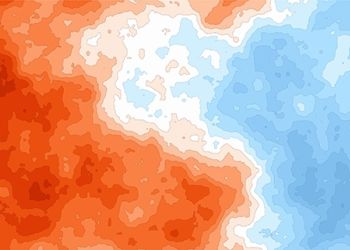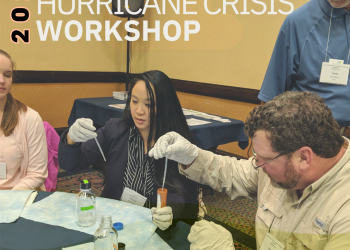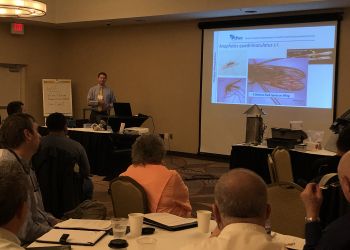This guest post was written by Bailey Stearns ([email protected]), from the U.S. Environmental Protection Agency (EPA) Office of Research and Development.
EPA researchers are building on an expansive body of world-class research and applying that knowledge to reduce the risk of exposure to SARS-CoV-2, the virus that causes COVID-19. This research can help states, tribes, local, and territorial governments make public health decisions, and guide homeowners, business owners, and others to reduce their risk of exposure to SARS-CoV-2.
Cleanup and Disinfection Evaluation
Reducing the risk of exposure to SARS-CoV-2 relies on effective cleaning and disinfection, along with public health strategies like testing and social distancing. EPA researchers are assessing the use of EPA-approved disinfectants against SARS-CoV-2 on surfaces and objects that are difficult to disinfect, like fabric and other soft or porous materials. We are also determining the best environmental sample collection methods and the limits of detection for SARS-CoV-2 on surfaces and objects. Researchers are evaluating longer-lasting microbial disinfectants and application methods for surfaces and objects that are frequently touched by multiple people where it is not practical to disinfect after each person.
The results of this research are being shared broadly with transit agencies, and other organizations and businesses where it can be applied, across the country. The latest results can be found here: https://www.epa.gov/healthresearch/long-lasting-sars-cov-2-disinfection-evaluation-test-results
In addition to assessing effective disinfectants, EPA researchers are evaluating innovative ways to disinfect large spaces. Possible approaches include using alternative methods to kill viruses such as ultraviolet light (UV), ozone, and steam, and promising disinfectant application methods such as electrostatic sprayers or foggers.
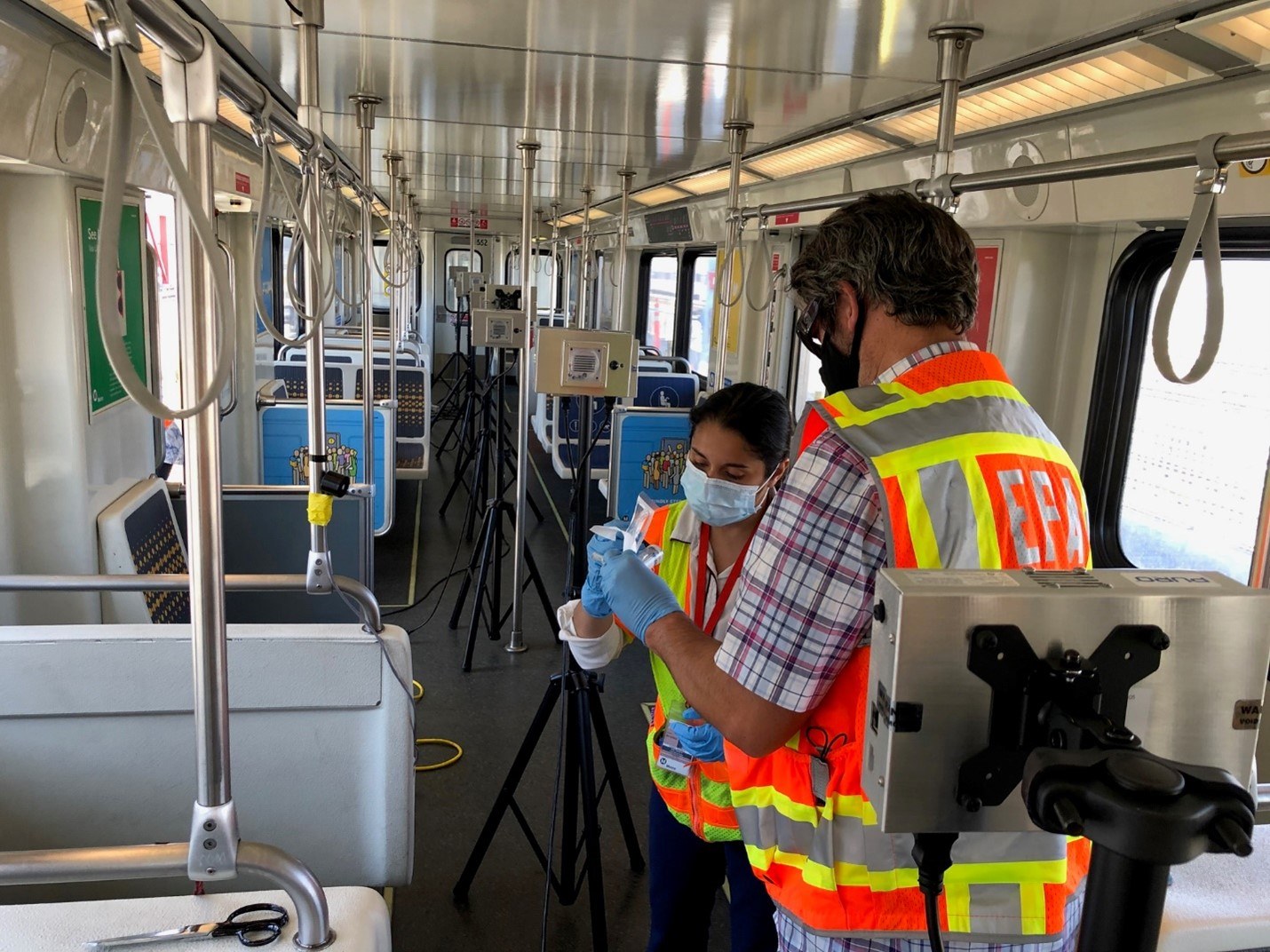
Building on these studies, researchers will evaluate technologies that are safe to operate in spaces that may be occupied by people to reduce the amount of SARS-CoV-2 in the air which could potentially reduce airborne transmission of COVID-19. EPA researchers are assessing how effective different devices and product technologies are in reducing airborne virus concentrations in indoor environments. The general classes of devices and products under consideration include UV-C devices, chemical-based devices and products, and physical removal devices.
Another area that researchers are addressing is the disinfection of personal protective equipment (PPE), including N95 masks. Having the ability to disinfect PPE without impacting its effectiveness can be critical for hospitals, nursing homes, and essential workers, especially when there is a potential for shortages. EPA researchers are evaluating methods of disinfecting used PPE and evaluating whether these methods could damage the PPE.
Wastewater Virus Monitoring and Detection
Researchers at EPA and the Centers for Disease Control and Prevention (CDC) are developing and applying methods for measuring SARS-CoV-2 levels in wastewater. With an infectious disease like COVID-19, people may be contagious before they show any symptoms. Preliminary research indicates that monitoring wastewater for the presence of SARS-CoV-2 may be useful as a sensitive early indicator of an infected community, serving as an early warning system to alert public health officials.
This project is taking place at the EPA laboratory located in Cincinnati, where researchers are receiving wastewater samples from wastewater treatment plants across southwestern Ohio.
In addition, while the risk to utility workers is considered low, EPA researchers are on a method to measure the levels of virus in wastewater to better understand potential risks from exposure to untreated sewage.
Salivary Antibody Assay Development
EPA researchers are working with CDC to develop a simple, low cost and non-invasive antibody test using saliva samples. Antibody testing helps identify people who have been exposed to SARS-CoV-2 but may not have ever developed symptoms, and who have subsequently developed an immune response. Such an antibody test could help public health officials determine the true rate of infection across the country.
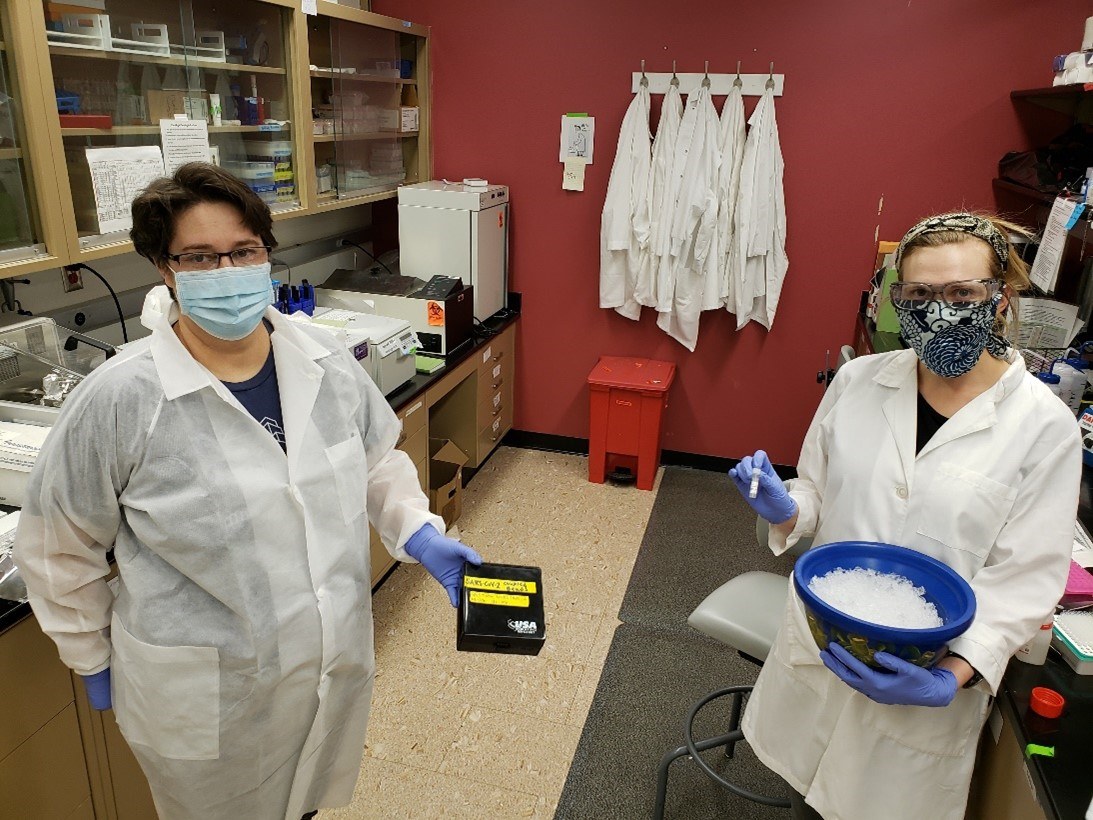
Modeling SARS-CoV-2 Aerosols
EPA researchers are studying SARS-CoV-2 aerosols including fate and transport in an office environment, in a mass transit setting, and evaluating potential aerosol disinfection device technologies in various scenarios. In an open office environment, researchers seek to determine baseline levels of exposure from aerosol transport and then test the impact of practical office modifications that could potentially reduce viral exposure. In a mass transit setting, the field assessment and modelling effort in partnership with the Department of Homeland Security (DHS) and the New York Metropolitan Transit Authority (NYC MTA) is investigating the impact of ventilation on reducing aerosolized virus in enclosed or semi-enclosed environments.
For more information about EPA’s SARS-CoV-2 research, please visit: https://www.epa.gov/healthresearch/research-covid-19-environment


